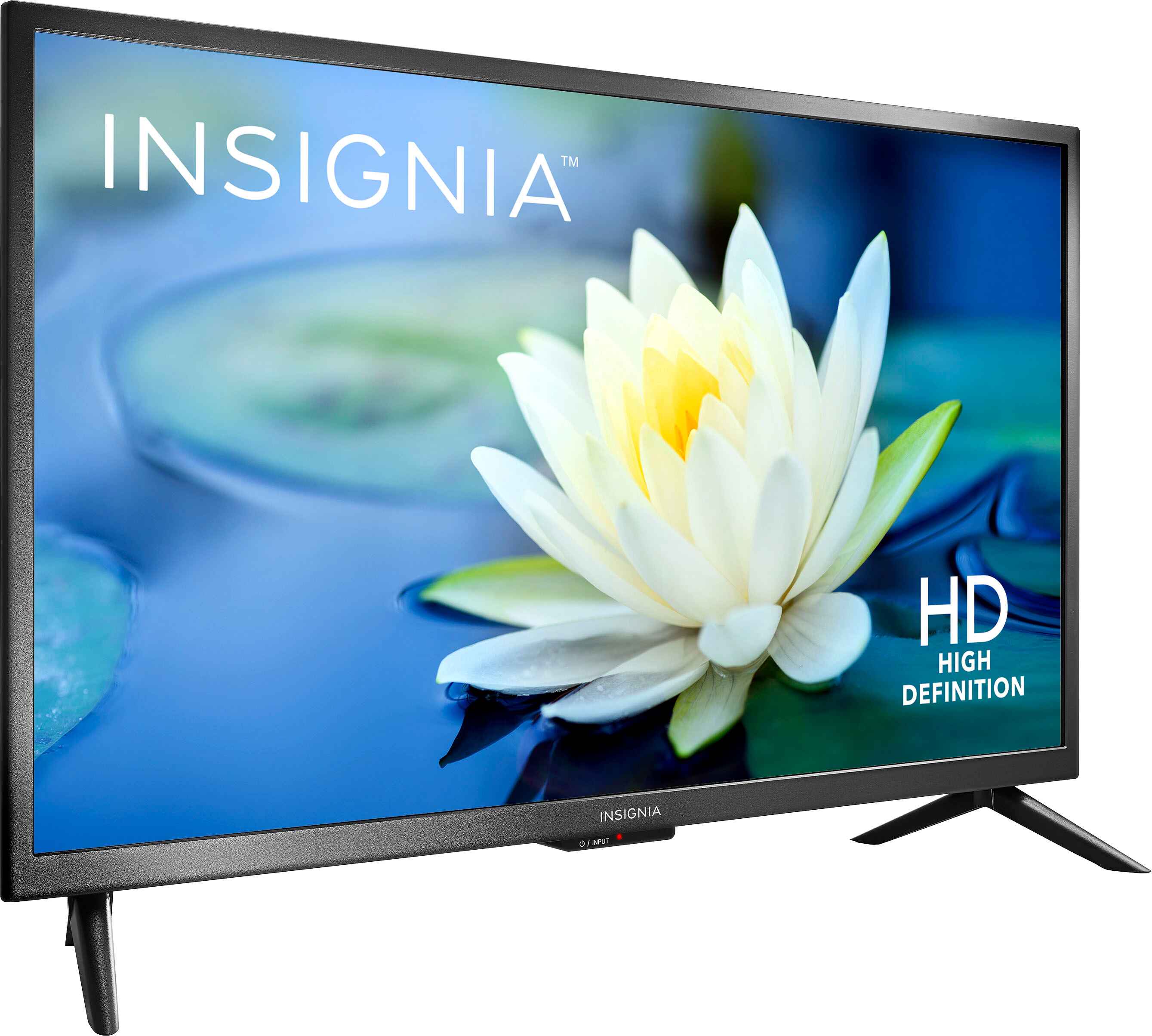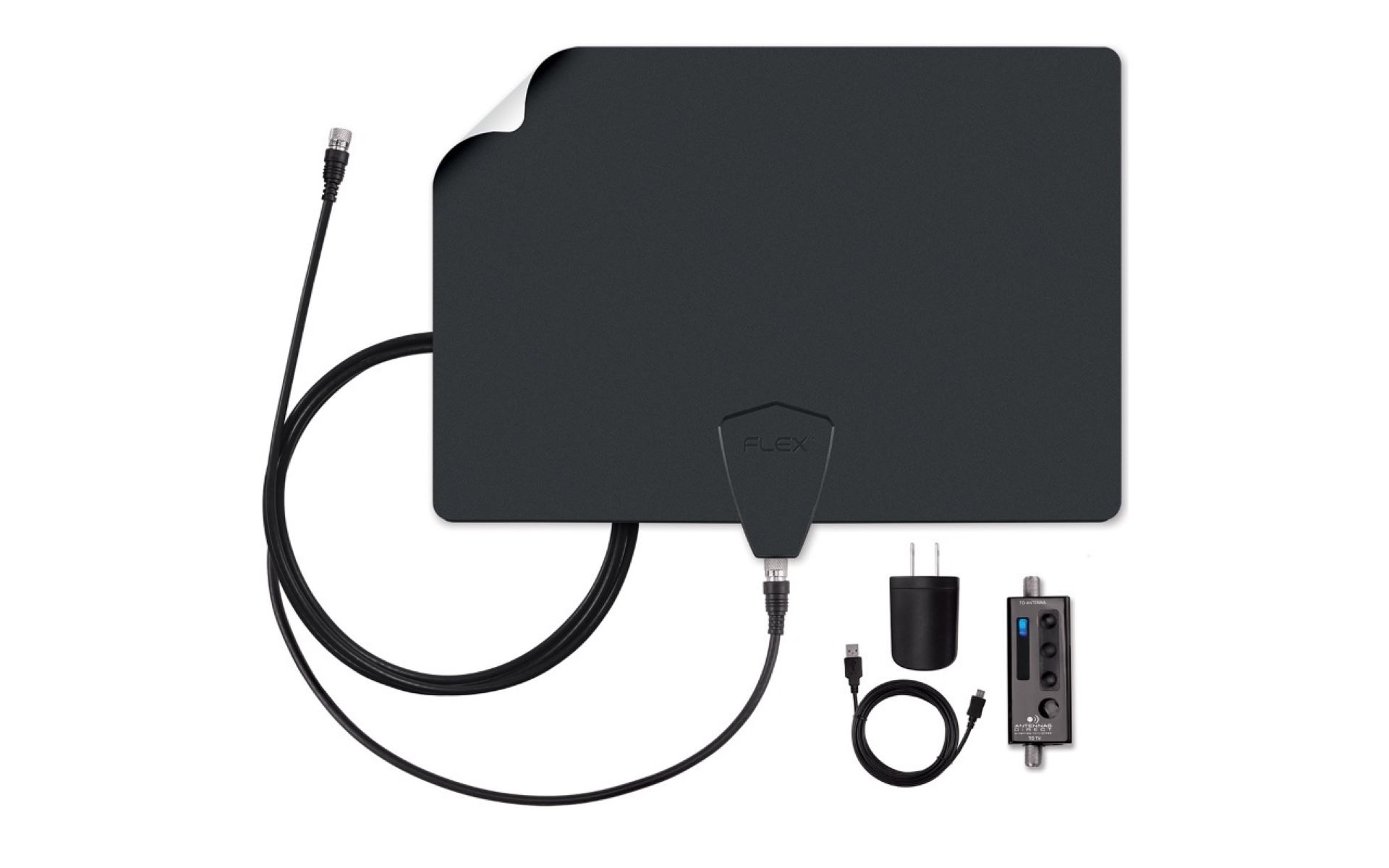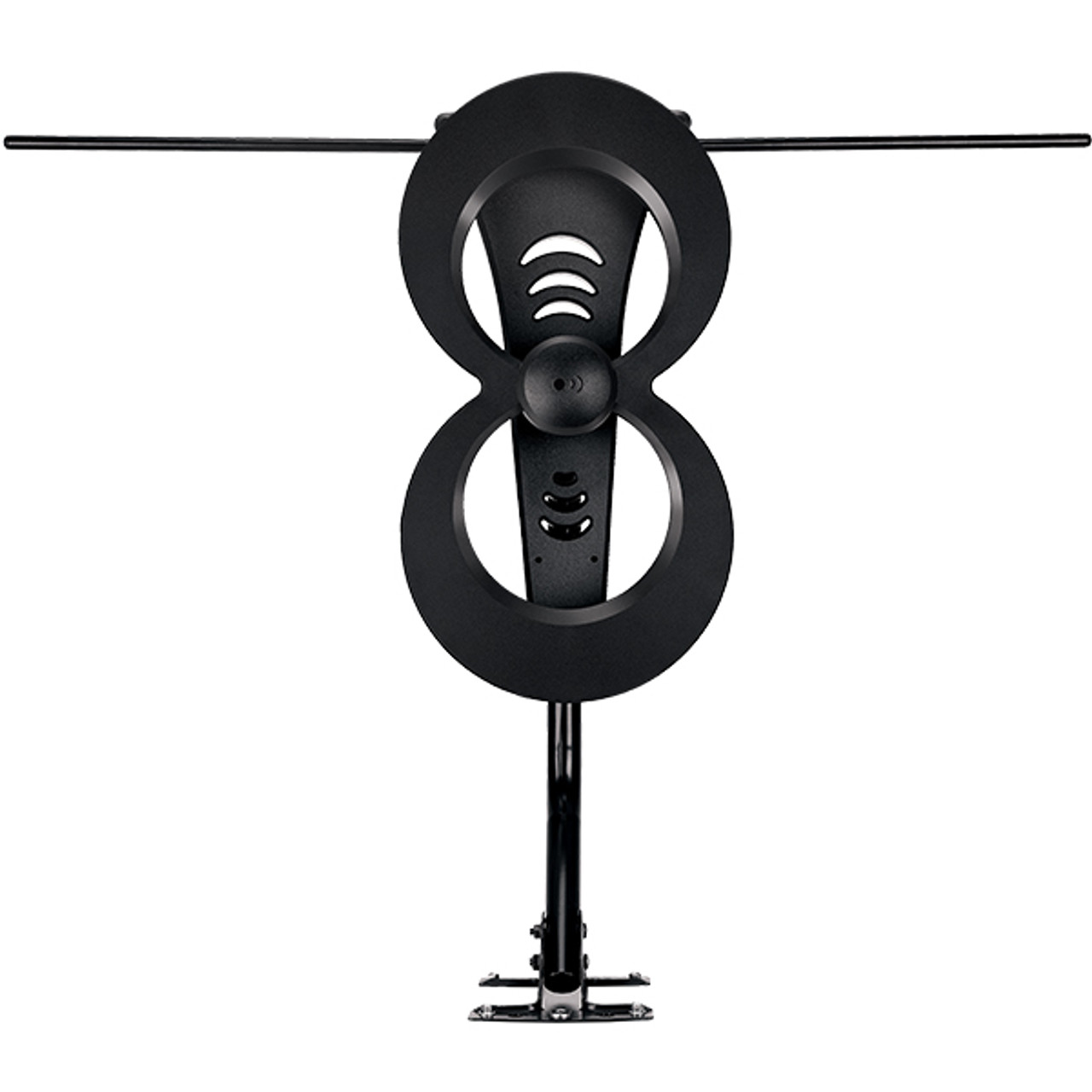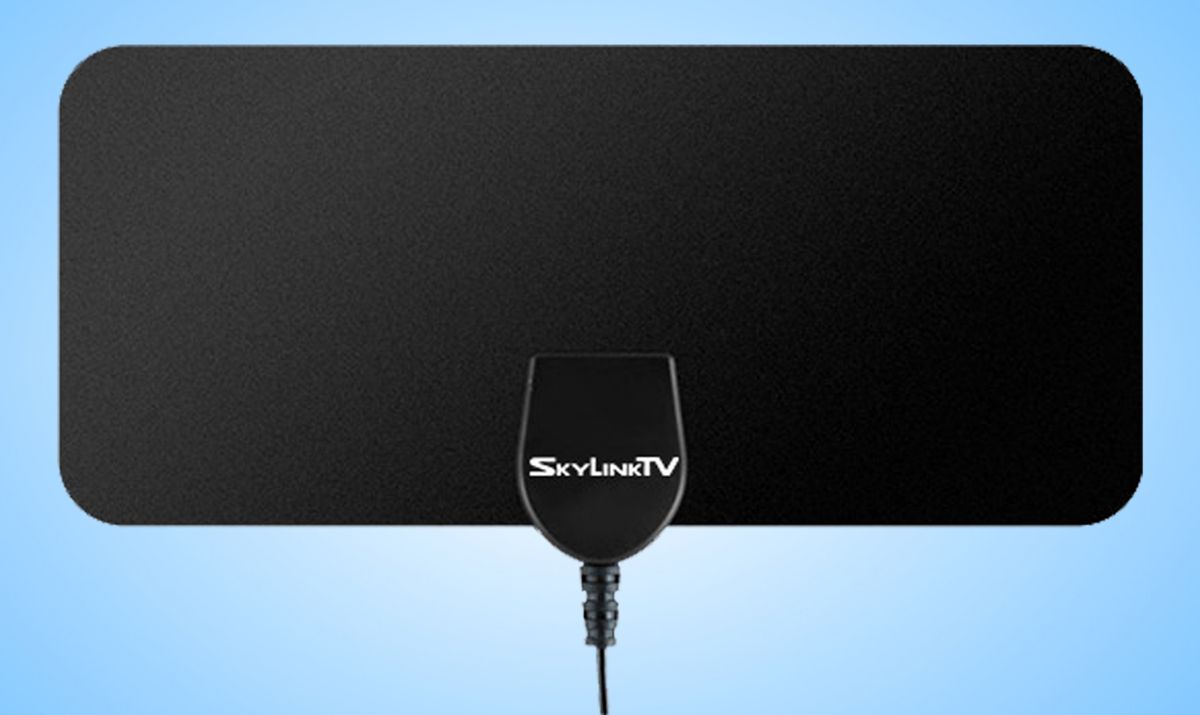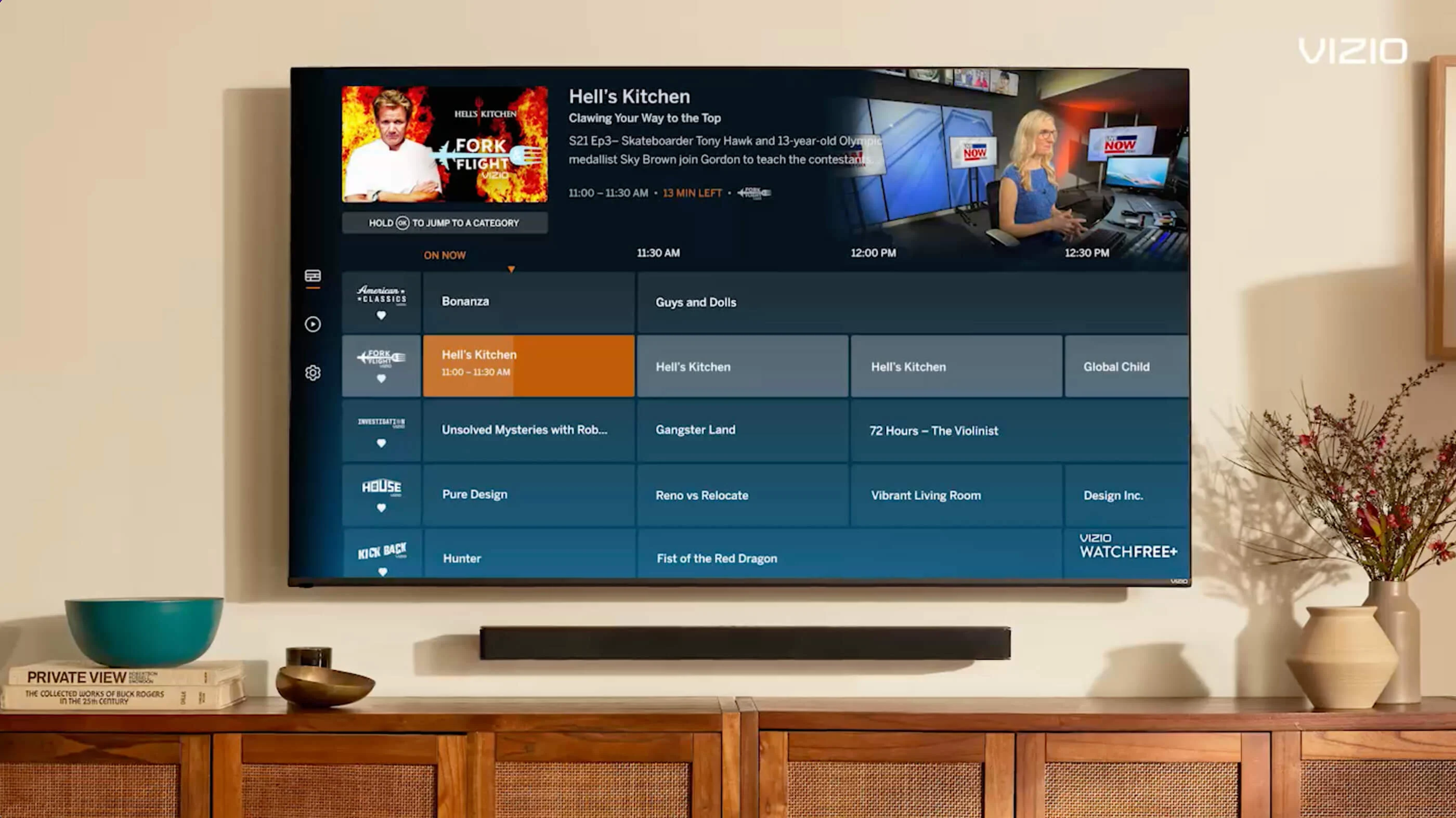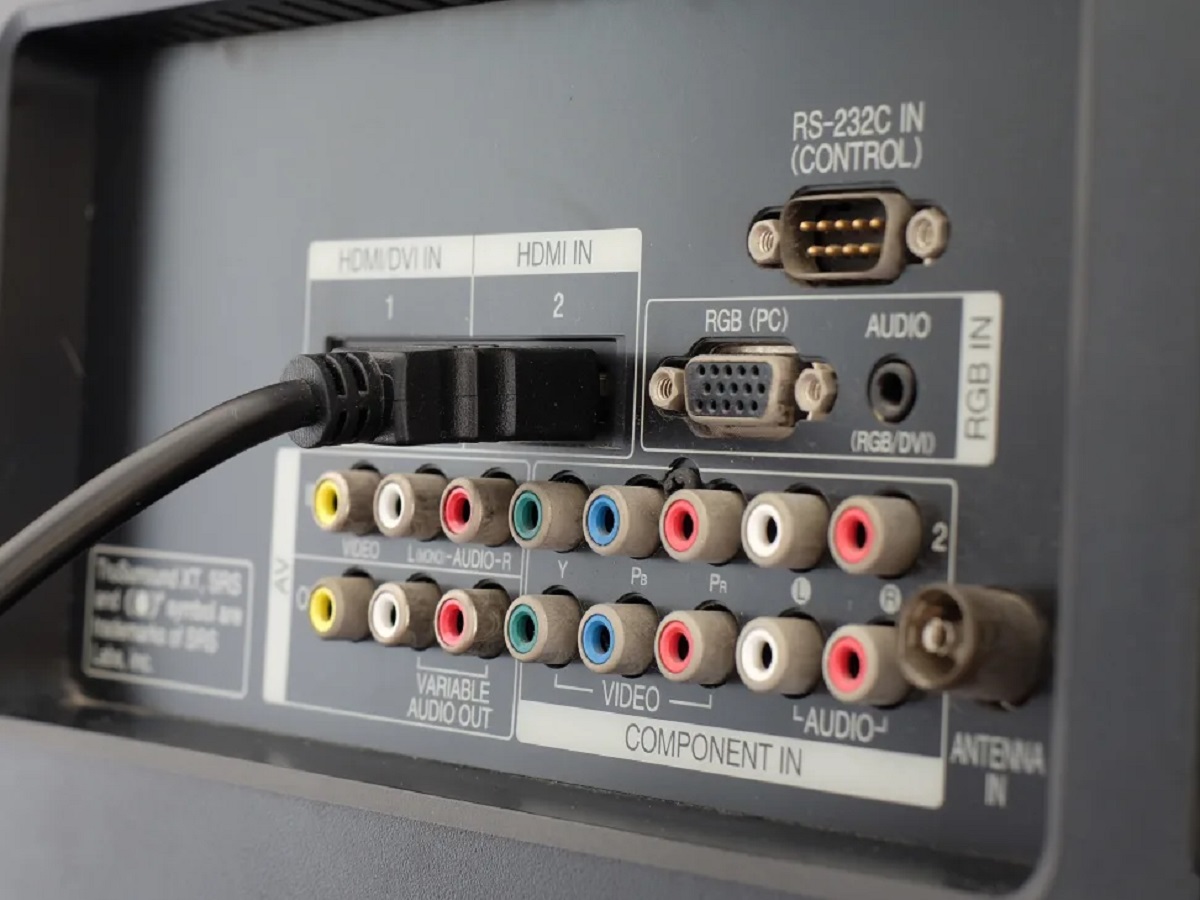Introduction
Welcome to the world of free TV! With the rise of streaming services and cable subscriptions, you might think that over-the-air TV has become a thing of the past. However, TV antennas still hold a special place in the hearts of many cord-cutters, providing access to a wide range of channels without any monthly subscription fees. But what channels can you actually get with a TV antenna?
The answer to this question can vary depending on several factors, including your location, the type of antenna you use, and the surrounding environment. In this article, we will explore these different factors and help you understand what channels you can expect to receive when using a TV antenna.
Before we dive into the specifics, it’s important to note that TV antennas pick up signals from local broadcast towers. The availability of channels in your area will largely depend on the distance to these towers and any obstacles or interference that may affect the signal. Additionally, the type of antenna you choose will also play a role in determining the channels you can receive.
So, whether you’re considering cutting the cord or simply looking to enhance your TV-viewing options, join us as we explore the factors that influence the channels you can get with a TV antenna. By the end of this article, you’ll have a clearer understanding of the possibilities that await you.
Factors that Determine the Channels You Can Get
When it comes to TV antennas, several factors come into play in determining the channels you can receive. Understanding these factors will help you set realistic expectations and make informed decisions about your TV antenna setup. Let’s explore the key factors:
- VHF vs. UHF Channels: Television channels are divided into two main frequency bands: Very High Frequency (VHF) and Ultra High Frequency (UHF). VHF channels (2-13) typically cover longer distances and are better suited for rural areas, while UHF channels (14-51) have a shorter range but offer higher picture quality. The channels available in your area may vary between VHF and UHF, depending on the local broadcasters.
- Distance to Broadcast Towers: The closer you are to the broadcast towers, the stronger the signal you’ll receive. This means that if you live in close proximity to the towers, you have a higher chance of receiving more channels. However, if you live in a more remote or rural area, the distance to the towers may limit the number of channels you can access.
- Obstacles and Interference: Buildings, trees, mountains, and other physical obstacles can block or weaken the TV signal. Additionally, electronic devices, such as routers and cell phones, can introduce interference that affects the reception quality. The presence of these obstacles and interference sources can impact the number and clarity of channels you can receive.
- Terrain and Signal Loss: The topography of your area can also influence the signal strength. If you live in a hilly or mountainous region, the terrain can obstruct the signal and result in weaker reception. Signal loss can also occur due to the distance the signal has to travel through various layers of the atmosphere.
By understanding these factors, you can set realistic expectations for the number and quality of channels you can receive with a TV antenna. It’s important to consider these factors when selecting and installing your antenna to optimize your viewing experience.
VHF vs. UHF Channels
When it comes to TV antennas, understanding the difference between VHF (Very High Frequency) and UHF (Ultra High Frequency) channels is crucial. Each frequency band has its own characteristics and affects the channels available in your area.
VHF channels range from 2 to 13 on the TV dial, while UHF channels span from 14 to 51. Traditionally, VHF channels were used for major networks, while UHF channels offered additional local and independent stations. However, with the digital transition, many stations have shifted their frequencies, blurring the distinction between VHF and UHF channels.
One important characteristic of VHF channels is their ability to propagate over longer distances. VHF signals have a more robust reach and can penetrate obstacles such as buildings and vegetation more effectively. This makes VHF channels well-suited for rural areas or places with distance between broadcast towers and homes.
On the other hand, UHF channels have a shorter range but offer higher picture quality. The shorter wavelength allows for more data to be transmitted, resulting in sharper images and better reception in populated urban areas. UHF frequencies are also less prone to interference from atmospheric conditions or other electronic devices.
The availability of VHF vs. UHF channels largely depends on your location and the broadcasting decisions made by the local stations. For instance, some areas may primarily have VHF channels, while others may have a mix of both VHF and UHF channels.
To determine the channels available in your area, you can use online tools or consult the FCC’s website for a comprehensive list of local stations and their corresponding frequencies. Additionally, TV Fool and AntennaWeb are popular resources that provide detailed information on available channels based on your location.
When choosing a TV antenna, it’s important to consider whether you primarily need VHF or UHF reception. Many modern antennas are designed to receive both VHF and UHF signals, but some models may excel in one frequency range over the other. Be sure to check the specifications and reviews of the antenna to ensure it suits your specific needs.
Understanding the differences between VHF and UHF channels will help you make an informed decision when selecting a TV antenna and improve your chances of receiving a wide range of channels in your area.
Distance to Broadcast Towers
The distance from your location to the broadcast towers has a significant impact on the channels you can receive with a TV antenna. Broadcast towers transmit signals that travel through the air to reach your antenna, and the strength of that signal diminishes as the distance increases.
Closeness to the towers is advantageous for receiving a strong and clear signal. If you live in close proximity to the towers, you can expect to have a higher chance of receiving more channels with optimal signal quality.
On the other hand, if you reside in a more remote or rural area, you may experience difficulties in accessing a wide range of channels. Distance from the towers can result in a weaker signal, leading to channels dropping out, poor reception, or even the inability to pick up certain channels.
To determine the distance between your location and the broadcast towers, you can use various online tools and apps. Websites like AntennaPoint and TV Fool provide coverage maps and distance calculators that will help you find the nearest towers and estimate the quality of reception you can expect.
Keep in mind that the distance alone is not the sole indicator of the channels you can receive. The terrain and any obstacles between your TV antenna and the broadcast towers also play a role. Buildings, trees, mountains, and other physical structures can obstruct the signal or cause it to bounce around, resulting in signal degradation and a reduction in available channels.
To overcome potential signal issues due to distance, you may need to consider a few options. One solution is to use a more powerful outdoor antenna with a longer range. Roof-mounted or attic antennas tend to have better reception capabilities, allowing you to pick up channels from a greater distance.
Alternatively, if you live in an area with significant signal challenges, you may need to invest in signal boosting technologies, such as amplifiers or signal boosters. These devices can enhance the incoming signal strength, compensating for the distance and improving your chances of receiving a wider variety of channels.
By understanding the distance between your location and the broadcast towers, you can adjust your expectations and choose the right type of antenna and additional equipment to optimize your TV antenna setup for the best possible reception.
Obstacles and Interference
When it comes to receiving TV channels with a TV antenna, obstacles and interference can significantly impact the quality and number of channels you can access. Understanding and overcoming these obstacles is crucial for optimizing your antenna setup.
Physical obstacles such as buildings, trees, and mountains can block or weaken the TV signal. The signal strength can be attenuated as it travels through these objects, resulting in reduced reception quality or the inability to pick up certain channels. For example, if you live in a densely populated urban area with high-rise buildings, the signal may struggle to penetrate these structures, resulting in weaker reception.
To overcome physical obstacles, consider placing your antenna in a location with a clear line of sight to the broadcast towers. A higher placement, such as on a rooftop or in an attic, can improve the signal reception by minimizing obstructions. Additionally, adjusting the antenna’s direction and experimenting with different orientations may help you find the optimal position for signal reception.
Interference from electronic devices can also disrupt the TV signal. Common sources of interference include wireless routers, cordless phones, and even household appliances. These devices emit electromagnetic frequencies that can interfere with the TV signal, causing pixelation, signal dropouts, or complete loss of certain channels.
To minimize interference, try moving your antenna away from these devices. Placing the antenna at a sufficient distance from other electronics can help reduce the impact of interference on the TV signal. Additionally, using shielded coaxial cables and grounding your antenna can minimize the risk of interference from electrical sources.
It’s also worth noting that atmospheric conditions, such as severe weather or changes in humidity and temperature, can temporarily affect signal reception. These conditions can result in signal fluctuations or even the temporary loss of certain channels. While these factors are beyond your control, it’s important to be aware of them and understand that they can impact your antenna’s performance.
By addressing the obstacles and interference in your environment, you can optimize the signal reception and improve your chances of receiving a wider range of channels. Experimenting with antenna placement, adjusting orientations, and minimizing electronic interference can go a long way in maximizing the performance of your TV antenna.
Terrain and Signal Loss
The terrain of your area can play a significant role in determining the quality and strength of the TV signal received by your antenna. Different types of terrain can introduce varying levels of signal loss, which can affect the number of channels you can pick up and the clarity of the reception.
In hilly or mountainous regions, the natural landscape can obstruct the TV signal. When the signal encounters hills or mountains, it can get blocked or reflected, resulting in signal loss or multipath interference. Multipath interference occurs when the signal bounces off obstacles and arrives at the antenna from multiple paths, causing ghosting or pixelation on the screen.
Additionally, the distance the TV signal has to travel through different layers of the atmosphere can also lead to signal loss. As the signal traverses the atmosphere, it can encounter absorption, reflection, or scattering, which weaken the overall signal strength. This is especially true for signals that need to travel long distances, such as in rural areas.
To overcome terrain-related signal loss, choosing an outdoor TV antenna can be beneficial. Outdoor antennas are often equipped with larger, more powerful elements and are mounted higher, allowing for better signal reception. Placing the antenna on a mast or tower may help clear any nearby obstructions and improve the line of sight to the broadcast towers.
Moreover, using an antenna with a higher gain can also help compensate for signal loss due to terrain. Antennas with higher gain are designed to capture weaker signals, allowing for better reception in areas with more challenging terrains.
While terrains with hills or mountains can present signal loss challenges, it’s important to note that not all terrains are equal. Flat or open terrains, such as plains or coastal areas, generally experience less signal loss as there are fewer obstacles for the signal to contend with.
By understanding the terrain characteristics of your area, you can make informed choices when selecting and installing your TV antenna. Taking into account the specific terrain challenges of your region will help optimize your antenna setup, allowing you to receive the maximum number of channels with the best possible reception quality.
Types of TV Antennas
When it comes to selecting a TV antenna, there are several types available that cater to different needs and environments. Understanding the various types can help you choose the one that best suits your requirements and maximizes your chances of receiving a wide range of channels.
1. Indoor Antennas: As the name suggests, indoor antennas are designed to be placed inside your home, typically near a window or on a shelf. They are compact and easy to install, making them a popular choice for those living in apartments or areas with restrictions on outdoor antennas. Indoor antennas work best when you are located close to the broadcast towers and have minimal interference from obstacles or buildings.
2. Outdoor Antennas: Outdoor antennas are mounted on the roof, in the attic, or on a pole outside the house. They typically have larger dimensions and higher gain, which allows for better reception and a wider range of channels. Outdoor antennas are ideal for areas with greater distances between the broadcast towers and your home or in regions with obstacles that can interfere with the signal.
3. Directional Antennas: Directional antennas are designed to receive signals from a specific direction. They have a narrower beamwidth and are capable of rejecting unwanted signals coming from other directions. Directional antennas are suitable when the broadcast towers are located in a specific direction, allowing you to focus the antenna towards those towers and improve reception.
4. Multi-directional Antennas: Multi-directional antennas, also known as omnidirectional antennas, receive signals from multiple directions. They have a wider beamwidth and can pick up signals from various angles, making them ideal for areas where the broadcast towers are dispersed or if you have difficulty determining the exact tower locations.
5. Amplified Antennas: Amplified antennas come with an integrated amplifier that boosts the TV signal, allowing for better reception in areas with weak or marginal signals. These antennas are beneficial when you are located far from the broadcast towers or if you have multiple television sets connected to a single antenna.
6. Rooftop Antennas: Rooftop antennas are outdoor antennas installed on the roof of your house. They are positioned at a higher elevation, providing an unobstructed view of the broadcast towers. Rooftop antennas typically offer the best chance of receiving a wide range of channels, especially in areas with challenging signal reception conditions.
It’s important to consider your specific location, distance to the broadcast towers, surrounding obstacles, and the type of channels you want to receive when choosing a TV antenna. Researching the different types and consulting online resources or professionals can help you make an informed decision and ensure optimal performance from your TV antenna.
Indoor vs. Outdoor Antennas
When considering a TV antenna, one of the key decisions you’ll need to make is whether to go with an indoor or outdoor option. Both indoor and outdoor antennas have their advantages and considerations, so it’s important to understand the differences between the two.
Indoor Antennas: Indoor antennas are designed to be placed inside your home, typically near a window or on a shelf. They are compact, easy to install, and do not require any specialized mounting or outdoor installation. Indoor antennas are well-suited for those living in apartments, rental properties, or areas with restrictions on outdoor antennas.
One of the main advantages of indoor antennas is their convenience and portability. They are lightweight and can be easily repositioned or relocated, allowing you to experiment with different placement options to find the best signal reception. Additionally, indoor antennas are often more affordable compared to outdoor antennas, making them a budget-friendly choice for many.
However, indoor antennas have limitations, particularly when it comes to signal reception. Since they are placed indoors, they may experience more interference from obstacles like walls, furniture, or other electronic devices. Additionally, indoor antennas may not have the same level of gain or range as outdoor antennas, making them more suitable for areas with strong signal reception or close proximity to the broadcast towers.
Outdoor Antennas: Outdoor antennas, as the name suggests, are mounted outside of your home on the roof, in the attic, or on a pole. They are larger in size and often offer higher gain and a longer range compared to indoor antennas. Outdoor antennas are ideal for areas with greater distances between the broadcast towers and your home or in regions with obstacles that can interfere with the signal.
One of the primary advantages of outdoor antennas is their ability to receive signals more effectively. Being outside and positioned at a higher elevation, outdoor antennas have a clearer line of sight to the broadcast towers, reducing the likelihood of signal obstructions and interference. This can result in better reception quality and the ability to pick up channels from a wider range.
Outdoor antennas also have the advantage of having a greater range and gain. This makes them more suitable for rural areas or locations with weak signal reception, as they can pull in signals from a greater distance and overcome signal loss due to terrain or obstacles. However, it’s important to consider the installation process and potential weather-related challenges that could arise when mounting an outdoor antenna.
Ultimately, the choice between an indoor or outdoor antenna depends on various factors, including your location, signal strength in your area, and the presence of any obstacles or restrictions. If you have a clear line of sight to the broadcast towers and live in an area with strong signal reception, an indoor antenna may suffice. However, if you require stronger signal reception or live in a challenging signal environment, an outdoor antenna is likely your best bet for maximum channel availability and reception quality.
Selecting the Right Antenna for Your Area
Choosing the right TV antenna for your area is crucial to ensure optimal signal reception and maximize the number of channels you can access. The following factors will help guide you in selecting the antenna that suits your location:
1. Determine Available Channels: Start by researching the available channels in your area. Use online tools, such as the FCC website, TV Fool, or AntennaWeb, to generate a list of local stations and their corresponding frequencies. This will give you an idea of what channels you can expect to receive and whether they are VHF or UHF.
2. Consider Signal Strength: Assess the signal strength in your area by checking coverage maps or signal quality reports. This will help you determine whether you need a more powerful antenna, especially if you live far from the broadcast towers or in an area with weak signal reception.
3. Evaluate Terrain and Obstacles: Evaluate the terrain and any potential obstacles that may obstruct the TV signal, such as hills, buildings, or trees. If you live in a hilly area or have significant obstructions, consider an outdoor antenna with a high gain and directional capabilities to overcome these challenges.
4. Consider Distance to Broadcast Towers: Determine the distance between your location and the nearest broadcast towers. If you live closer to the towers, you may have more flexibility in choosing an indoor antenna. However, if you are in a remote area, an outdoor antenna with a longer range may be necessary.
5. Antenna Type: Choose the right type of antenna based on your specific needs and circumstances. If you are in an urban area with multiple broadcast towers in different directions, a multi-directional antenna may be ideal. If you are in a rural area with broadcast towers in a specific direction, a directional antenna can enhance reception.
6. Consider Amplification: Amplified antennas come with built-in signal boosters to enhance weak signals. If you live in an area with marginal signal reception or plan to split the signal among multiple televisions, an amplified antenna may be beneficial.
7. Seek Expert Advice: If you are unsure about the type of antenna to choose or need assistance with installation, consider consulting with an expert. They can provide personalized recommendations based on your specific location and requirements.
Remember that selecting the right antenna involves considering multiple factors. It’s important to research and understand the characteristics of your area to make an informed decision. By choosing the right antenna for your location, you can optimize signal reception and access a wide range of channels with the best possible quality.
Installation Tips and Considerations
Installing a TV antenna may seem like a daunting task, but with the right approach and preparation, you can achieve optimal signal reception and enjoy a wide range of channels. Here are some tips and considerations to keep in mind during the installation process:
1. Location, Location, Location: Finding the optimal location for your antenna is crucial. Consider placing it as high as possible, whether indoors or outdoors, to minimize obstacles. Position it near a window or clear line of sight to the broadcast towers for the best signal reception.
2. Antenna Orientation: Once you’ve chosen the installation location, experiment with different antenna orientations. You can manually adjust the antenna direction or use an antenna rotator if you have a directional antenna. Fine-tuning the antenna orientation can significantly improve signal reception.
3. Grounding: If you are installing an outdoor antenna, proper grounding is essential for safety and signal integrity. Ensure that the antenna mast and any supporting mounts are grounded according to local electrical codes to protect against lightning strikes and interference.
4. Cable Quality: Use high-quality coaxial cable to connect your antenna to your TV or tuner. Cheap or low-quality cables may result in signal loss or interference. Look for cables with good shielding and low signal attenuation for optimal performance.
5. Signal Splitters: If you plan to connect the antenna to multiple televisions, consider using a quality signal splitter. Be mindful that each split reduces the signal strength, so for the best results, use a distribution amplifier to maintain signal integrity and optimize reception.
6. Test and Rescan: After installation, it’s essential to perform a channel scan on your television or tuner to detect the available channels. Signal strength may vary, so periodically rescan to capture any new channels that may become available in your area.
7. Weatherproofing (Outdoor Antennas): If you’re mounting an outdoor antenna, use suitable waterproofing techniques to protect the connections and cable from weather elements. Apply weatherproofing tape or use weatherproof cable connectors to prevent water damage and ensure long-term performance.
8. Eliminate Interference: Minimize interference from nearby electronic devices by keeping them away from your antenna and TV. Move wireless routers, cordless phones, and other electronics to a different location to reduce potential signal disruptions.
9. Seek Professional Help: If you’re unsure about the installation process or need assistance, consider consulting with a professional antenna installer. They have the expertise and experience to recommend the right antenna for your location and ensure a proper installation.
By following these installation tips and considerations, you can optimize your TV antenna setup, ensuring the best possible signal reception and maximizing the channels you can access.
Testing and Scanning for Available Channels
Once you have installed your TV antenna, it’s time to test and scan for the available channels in your area. This process allows you to identify the channels that you can receive and fine-tune your antenna setup for optimal signal reception. Follow these steps to test and scan for available channels:
1. Set Up your TV or Tuner: Connect your TV or digital tuner to your TV antenna using a high-quality coaxial cable. Make sure all connections are secure and properly tightened.
2. Access the Channel Scan Menu: On your TV or tuner’s menu, look for the “Channel Scan” or “Auto-Tuning” option. This option may be found in the settings or setup menu of your device. Refer to your TV’s user manual if you’re unsure how to access this menu.
3. Select Antenna or Air Mode: Inside the channel scan menu, choose the “Antenna” or “Air” mode. This selects the signal source as the TV antenna, allowing the device to scan for available channels over-the-air.
4. Start the Channel Scan: Initiate the channel scan by selecting the “Start,” “Scan,” or “Auto-Tune” option. This process may take a few minutes as the TV or tuner searches for available channels in your area.
5. Monitor the Scan Progress: During the scan, you may notice a progress bar or indicator on your screen. This indicates the device’s progress in scanning and detecting available channels.
6. Complete the Channel Scan: Once the scan is complete, the TV or tuner will provide a list of channels that have been detected. This list may include both digital and analog channels, but focus on the digital channels as they provide better picture and sound quality.
7. Sort and Organize Channels: After the scan, you may want to sort and organize the channels based on your preferences. Some devices allow you to rename channels or create favorites lists for easy access in the future.
8. Fine-Tune Your Antenna: If you notice that some channels have weak or pixelated signals, you may need to fine-tune your antenna’s positioning or orientation. Make slight adjustments to the antenna’s direction and rescan to see if the signal improves.
9. Periodically Rescan: It’s a good practice to periodically rescan for available channels, especially if you’ve made changes to your antenna setup or if new channels become available in your area. Set a reminder to rescan every few months to ensure you’re receiving all the channels that are currently broadcasting.
By following these steps and conducting regular channel scans, you can fine-tune your TV antenna setup, optimize signal reception, and enjoy a wide variety of free over-the-air channels.
Common Channels Available with an Antenna
Using a TV antenna provides access to a variety of free over-the-air channels, offering a diverse range of programming options. The specific channels you can receive will depend on factors such as your location, distance to the broadcast towers, and the type of antenna you use. While the availability of channels may vary, here are some common channels you can expect to receive with a TV antenna:
1. Major Networks: Over-the-air antennas provide access to major networks such as ABC, CBS, NBC, FOX, and PBS. These networks offer a wide range of programming including news, sports, popular TV shows, and more.
2. Local Stations: Your antenna will pick up local stations affiliated with major networks, giving you access to local news, weather updates, community events, and regionally relevant programming.
3. Subchannels: Many broadcast stations offer subchannels, which are additional channels within their main frequency. These subchannels often feature niche programming, such as classic TV shows, movies, educational content, or foreign language channels.
4. Multicast Networks: Multicast networks are niche channels that provide specialized content. Examples of multicast networks include MeTV, Antenna TV, Comet, and ThisTV, which offer viewers a variety of classic TV shows, movies, and other nostalgic programming.
5. Local Sports Channels: Depending on your region and the availability of local sports programming, you may receive access to channels that broadcast local sports events, including college and high school games, professional team coverage, and regional sports networks.
6. Weather Channels: Some TV antennas offer access to dedicated weather channels that provide live updates, forecasts, and radar coverage for your local area.
7. Religious and Lifestyle Channels: TV antennas often pick up religious channels, providing access to religious services, spiritual programming, and inspirational content. Additionally, channels focused on lifestyle topics such as food, travel, home improvement, and health are also common.
8. Public Broadcasting Service (PBS) Stations: PBS stations are known for educational and informative programming, including documentaries, children’s shows, cultural content, and arts-oriented shows. PBS stations often have multiple subchannels that provide a diverse lineup of content.
It’s important to note that the availability of specific channels may vary depending on your location and the strength of the signals received. Consulting online resources, using signal strength tools, and scanning for channels with your TV antenna will give you a more accurate list of the channels available in your area.
By using a TV antenna, you can receive a wide range of channels without any monthly subscription fees, expanding your entertainment options and providing access to local and national programming. Enjoy the variety of content available and explore all the channels that your TV antenna brings into your home.
Conclusion
TV antennas offer a cost-effective and convenient way to access a wide range of free over-the-air channels. By understanding the factors that determine the channels you can receive, such as VHF vs. UHF frequencies, distance to broadcast towers, obstacles and interference, terrain, and the type of antenna you choose, you can make informed decisions and optimize your TV antenna setup.
Indoor antennas are suitable for those in urban areas with strong signal reception, while outdoor antennas are ideal for those in rural areas or areas with obstacles blocking the signal. Directional antennas are great for targeting specific broadcast towers, while multi-directional antennas are useful in areas with towers in multiple directions.
Installing a TV antenna requires consideration of factors like location, antenna orientation, grounding, cable quality, and eliminating interference. Performing channel scans and periodically rescanning will help you discover and organize the available channels in your area.
Common channels available with a TV antenna include major networks, local stations, subchannels, multicast networks, local sports channels, weather channels, religious and lifestyle channels, and public broadcasting stations. The specific channels you can receive will depend on your location and the strength of the signals in your area.
Overall, TV antennas provide a cost-effective and reliable way to access a variety of channels, giving you access to both local and national programming without the need for expensive cable or satellite subscriptions. By understanding the factors that influence channel availability, selecting the right antenna for your location, and optimizing your installation, you can enjoy the benefits of free over-the-air TV and enhance your television viewing experience.









